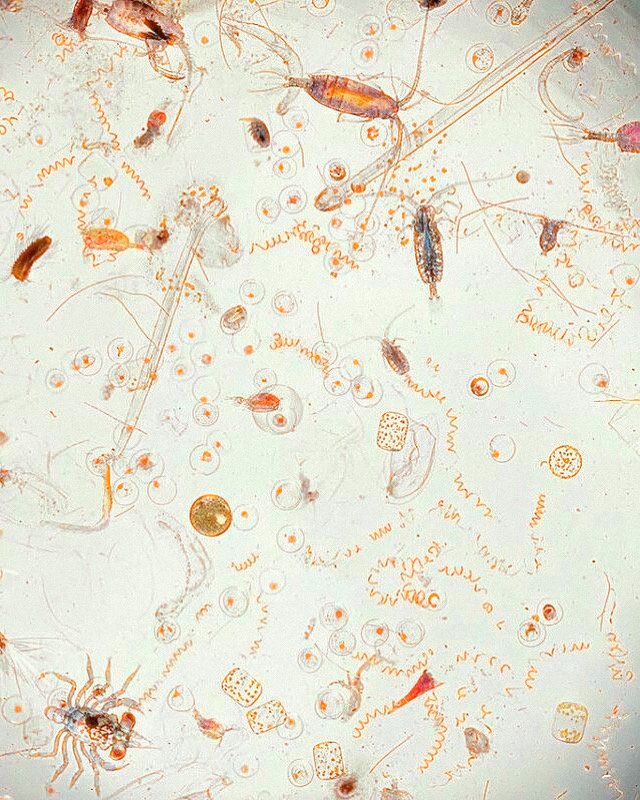It's Elementary, The Sedimentary Results
One of the most fascinating—and sometimes frustrating—aspects of crafting an entirely new product is watching nature do what it does best: evolve. We have spent years fine-tuning our fermentation and filtration process to create a fish sauce that is as clean, bright, and umami-packed as possible. Yet, with the addition of a pasteurization step in our process, we have discovered that by heating our sauce, we have created a new challenge.
For the meticulous among us, this might raise an eyebrow. After all, we run our sauce through precise filtration steps, only to watch particulates reappear during heat treatment and bottling. Why? Well, as it turns out, it’s just elementary. I would love to explain this in a less scientific flow, however, I feel like sharing with you this scientific side of our journey. It really is fascinating.
Spirit of the Great Lake, Third Coast Superior Fish Sauce.
So, off we go!
Heat-Induced Sediment: It’s just nature
Because the FDA requires heat treatment and bottling at a certain temperature, it’s at this stage that we start to see particulates forming. Here’s a mouthful of the Why:
Protein Denaturation & Precipitation
At 185°F, proteins and peptides in the sauce that was previously soluble begin to denature (unfold) and aggregate, forming visible particulates.
This is similar to how broth turns cloudy when boiled proteins that were once dispersed become unstable at high temperatures.
Mineral & Salt Precipitation
Our sauce contains natural minerals, salts, and amino acids that dissolve at lower temperatures.
When heated, some minerals (such as calcium and magnesium) become less soluble and precipitate out, forming sediment.
Fermented sauces are particularly prone to this, as minerals interact with proteins during heat exposure.
Koji Byproduct Instability
Our fermentation relies on koji-inoculated short-grain rice (Aspergillus oryzae), which produces enzymes and complex amino acid compounds.
Some of these remain soluble at room temperature but begin to coagulate when heated, contributing to sedimentation.
Holding at Temperature During Bottling
Even after filtering at 196°F, the sauce is held at 185°F, which allows particulates to continue forming post-filtration.
Essentially, the process is dynamic—new particulates form just as quickly as we remove them.
We have both learned to love these little particulates. We have made our peace and now look at them as an opportunity to further refine our process. And continue to elaborate on our understanding and application of the enzymatic rabbit hole.
What Does This Mean for Our Sauce?
This is a completely natural, albeit unanticipated, reaction. The sediment you see is a result of the intricate balance of proteins, minerals, and enzymes that make our sauce what it is. These particulates are harmless, and if anything, they’re a sign of the sauce’s complexity and authenticity.
know that these tiny, suspended elements are just part of the magic of traditionally fermented foods, and in particular, our ever-evolving products. We’re always exploring ways to refine our process while preserving what makes our sauce special. Whether through slight temperature adjustments, additional filtration steps, or even enzyme treatments (more on that soon), we’re committed to pushing the boundaries of what’s possible—without compromising the integrity of our beloved sauces.
So next time you spot a little sediment in your bottle, just remember it’s elementary, the sedimentary results.
Happy cooking,
Steven
As always, we want to thank our small circle of sources:
Bodin Fisheries and Bill Bodin
Jacobsen Salt Co.
Pinch Spice Market and Tom and Family
Thank you! From the bottom of our hearts and souls, we thank you for your continued devotion to our mission to create not only the most amazing fish sauce on earth, the only one in North America, but also our evolution into vegan garums and especially our unwavering commitment to regenerating our ecosystems and communities.
We also want to thank all the amazing sauce lovers out there, whether you're a celebrity or quiet like me.
We see you, we feel you, and we feel the love. You will all feel the sauce soon.
To read other Third Coast Superior blog posts, including Steven’s recipes, visit Third Coast Blog.



